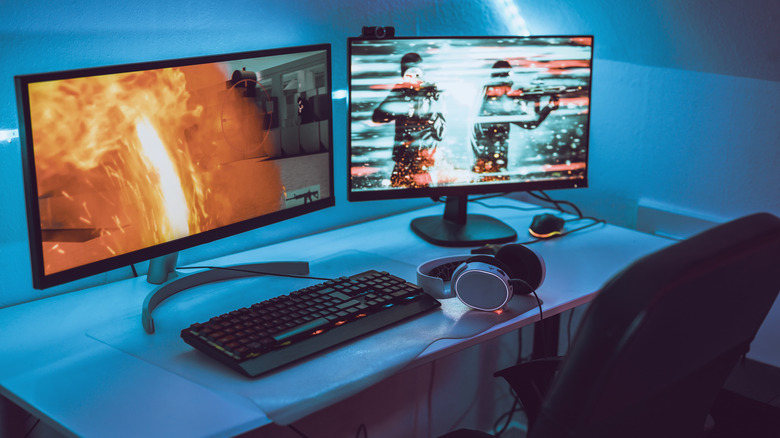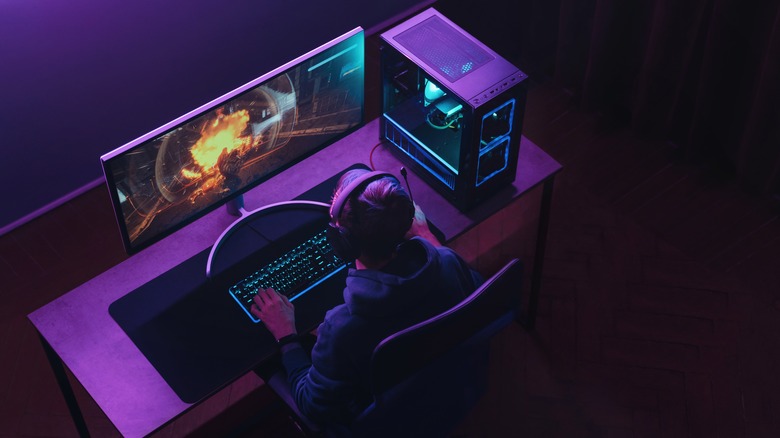What Is V-Sync, And Should You Turn It Off?
When it comes to PC gaming, it's all about performance. Gamers will do almost anything to ensure they get the smoothest experience and the highest framerates, even unplugging their second monitor when gaming. Don't put it past a PC gamer to hunt down all the GPU settings ruining their gaming experience. One setting in particular has always been a massive question: V-Sync. What exactly does it do? Is it improving or worsening performance? And should you turn it off?
V-Sync is short for Vertical Synchronization. It's a graphics feature that syncs your game's framerate with your monitor's refresh rate to reduce screen tearing in any graphically intensive application (usually video games, but it can be anything 3D-related). Screen tears happen when your screen and GPU are out of sync and present portions of multiple frames simultaneously; resulting in a noticeable, off-centering horizontal split across your display.
If you enable V-Sync (either through your GPU or in-game settings), your PC will hard cap your framerate to your monitor's refresh rate. For example, if your monitor has a 60Hz refresh rate, you'll only get 60 fps, 144Hz will display 144 fps, and so on. At the end of the day, V-Sync is a feature strictly designed to prevent screen tearing. It doesn't improve graphics or performance. In some cases, it can negatively impact your PC's performance, leading to the inevitable next question.
Should you turn V-Sync off?
The short answer as to whether or not you should turn V-Sync off is that it depends on a few factors — but probably yes. It sounds like a beneficial feature that smooths out your PC's display, which very well may be the case. However, it can also negatively impact your overall performance by limiting your framerate and causing input lag.
No two PCs are the same, so the best way to figure out whether or not you need V-Sync is to test it on your machine. Turn V-Sync on if you notice frequent screen tearing when gaming or using other 3D applications, regardless of the hardware you're working with. On the other hand, turn V-Sync off if you have it enabled and you're noticing severe input lag or lower-than-normal framerates.
However, chances are that you don't need to have V-Sync turned on. Screen tearing happens when games and applications run at a higher framerate than your monitor can handle. However, most of today's monitors, particularly gaming monitors, have high refresh rates. It's not uncommon to see monitors with 144Hz, 160Hz, and even 240Hz refresh rates.
If you have a high-refresh-rate monitor, you should turn V-Sync off because your monitor can handle the frames, so the only thing V-Sync is doing is limiting your framerate. However, if you have a low refresh rate monitor, V-Sync is a helpful tool for reducing screen tearing, so you should turn it on or look into using a similar feature like Nvidia G-Sync.

